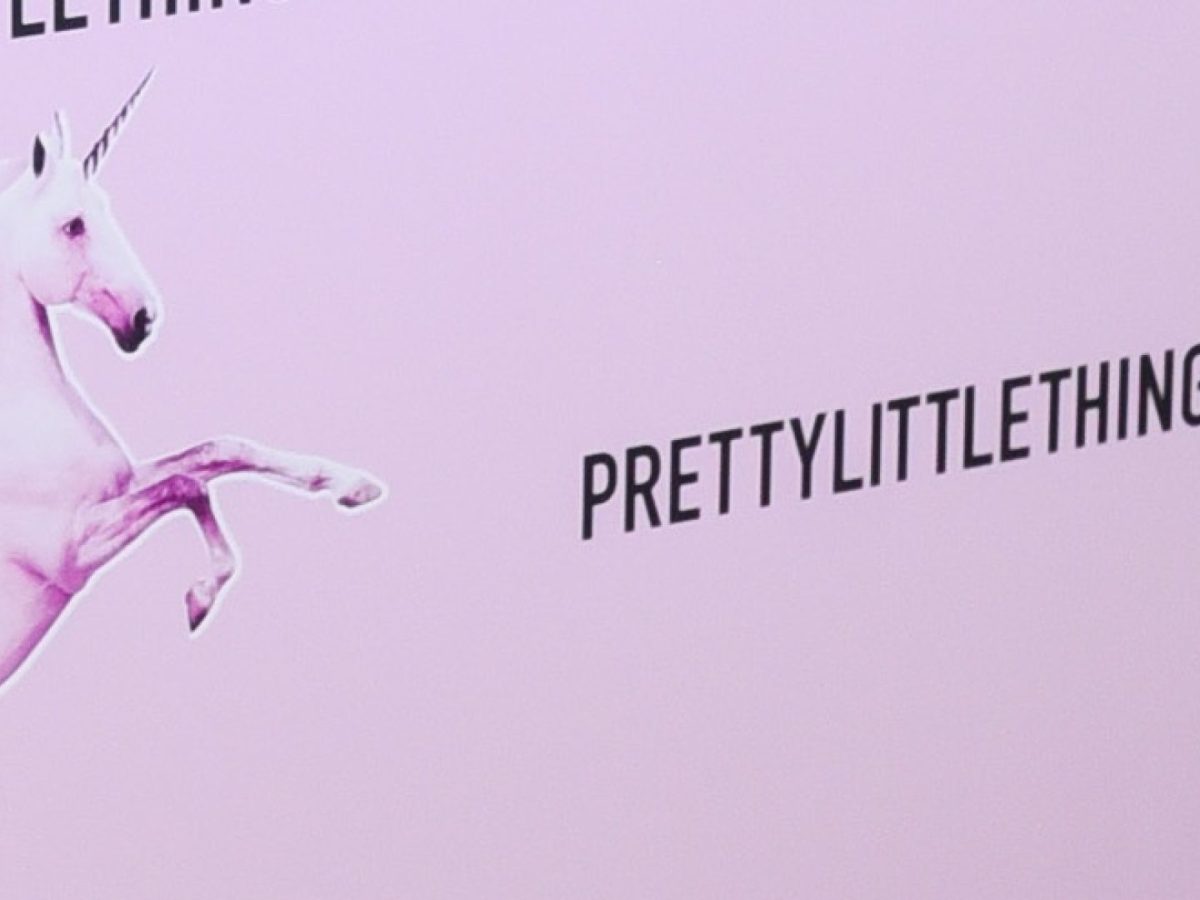
While the game of musical chairs has been plaguing fashion as of late, another trend dominates the industry just as much — the rebrand. From the illustrious Rabanne (formerly Paco Rabanne) making a reinvented debut on its 60th anniversary, to Pharrell Williams being appointed creative director of Louis Vuitton Men’s to carry on Virgil Abloh’s iconic legacy, a rebrand is nothing new in fashion. The latest company to join the reinvention party? Pretty Little Thing.
Up until recently, the coveted fast-fashion retailer was one of the premier destinations for trendy pieces and “BBL-inspired” fashion. From younger millennials to Gen Zers fresh out of high school, Pretty Little Thing was the go-to for tapping into hot trends without breaking the bank. The brand’s offerings included direct dupes of high-end designs like Jean Paul Gaultier’s body-illusion pieces. Collaborations with industry authorities like Naomi Campbell and Lori Harvey helped solidify PLT’s reputation as a stylish powerhouse. So, why the rebrand?
As successful as PLT was at championing low-cost fashion, the UK-based company sacrificed ethics and sustainability in the process. It’s no secret that fast fashion contributes to the industry’s waste problem, and PLT was a major player in that overconsumption cycle. Many of its pieces were made with synthetic materials that barely lasted two to five years — a complaint that didn’t go unnoticed. According to Fashion Network, the once-bubblegum-pink label (part of the Boohoo Group) has even faced financial troubles, with U.S. sales dropping from £177.5 million to £67.5 million.
Customer complaints and financial hardships are understandable grounds for a rebrand — but did fashion really need it? According to PLT (now helmed by co-founder Umar Kamani, who returned last year), this “Legacy In Progress” marks an elevated identity while celebrating the brand’s roots and “boldly reimagining its future.” Their signature unicorn wings and pink bags have been swapped for a muted palette of burgundies, browns, creams, and beige. Bodycon dresses have transformed into ruched maxis and minimalist co-ords — a coming-of-age from its fast-fashion era to a more “sophisticated” womenswear brand.
Naturally, PLT’s transition has stirred conversation on TikTok. Popular commentator Madame Joyce chimed in: “When I’m going through the website, it really does look like a lot of the stuff that PLT already had, just revamped and regraded with a better photoshoot,” she said. “I find it very annoying when a certain demographic of women invest into a shop — for example, us thicker girlies… gave us PLT shape for those that have big hips, and you just completely revamped forgetting about who your core audience is.”
This neglect of curvy women extends far beyond Joyce’s opinion. Creator Angel Njoku posted a review of PLT’s new plus-size pieces, pointing out sizing inconsistencies she’s experienced with previous purchases. Other users echoed concerns around the rebrand’s lack of inclusivity — like Dee, who noted, “All the models darker than a paper bag have disappeared from the front page.” Meanwhile, some shoppers have praised the new direction — but those voices rarely include Black or curvy women.
Running a successful fashion brand is no small feat. But values like knowing your audience, ensuring accessibility, and being transparent matter just as much as aesthetics. In today’s fast-changing trend cycle, rebranding might seem like a way to stay relevant. But it’s not just about a new logo or viral color palette. In PLT’s case, their quest to rebrand and reach a broader market appears to have sidelined some of their most loyal supporters — namely Black women — in favor of a more “quiet luxury” look that’s not as accessible as they claim.
This new aesthetic is largely modeled by a very specific demographic — think Sofia Richie-Grainge and Kylie Jenner. So it’s not shocking that the updated PLT doesn’t feel inclusive. The irony? Quiet luxury isn’t just about appearances, but quality — and that’s something PLT has yet to master. Historically, the brand has offered sales with clothing marked down by 99%, often selling synthetic garments priced under $200.
PLT’s controversial rebrand reveals a larger issue in fashion: in 2025, Black consumers still aren’t a priority. With major companies quietly rolling back DEI initiatives, it’s more important than ever for us to feel represented — especially when our dollars speak volumes. The buying power of the U.S. Black population reached $1.8 trillion last year, according to Market Data. Yet, most of us don’t have Louis Vuitton budgets, and the brands we can afford should offer quality, style, and inclusivity. After all, we can dress, too.